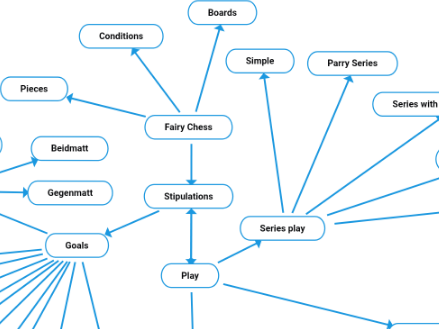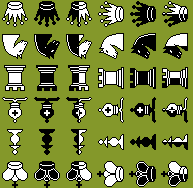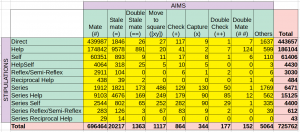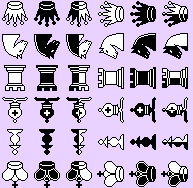 Going Forward
Going Forward
to Light and Order!
by Shankar Ram
Our chess problem field is not gaining as many new followers as it should. There is a competition for ways to spend leisure time: various other board and video games – most of them available online, as well as the old ways like music, movies, serials, sports – again mostly online. Also, the regular game is experiencing a boom, with more OTB and online tournaments. But here too, players are less interested in chess problems, than before.
In this atmosphere, we should try to make our hobby as attractive as possible for newcomers. The biggest area in chess problems is the category of fairy chess. Here, more and more new forms are being invented. The easy availability of chess problem solving software is probably helping in this. But this has created a big obstacle for the newcomer, who might well be scared away by the plethora of incomprehensible terms under the diagrams!
Therefore, this project is an attempt to provide an easy and helpful way for a newcomer to find the definition of an unfamiliar fairy element, as well as some additional information about its history, popularity, software supporting this element and of course, some carefully selected example problems which bring out the characteristics of the element.
In the process of this project, we need to classify the various elements into groups and sub-groups, along with linkages between similar elements – in short, produce a taxonomy or knowledge organisation of fairy chess elements. This will aid understanding, meet the human need for orderliness, and help to check whether a particular element is already existing.
 Of course, various sources are available online, many of which meet the above objectives. These have been used as the basis or foundation for this project. All of them have been listed and acknowledged. However, all of them have some shortcomings in terms of completeness, being up-to-date, clarity, example problems and organisation. Our project is an attempt to address all these shortcomings.
Of course, various sources are available online, many of which meet the above objectives. These have been used as the basis or foundation for this project. All of them have been listed and acknowledged. However, all of them have some shortcomings in terms of completeness, being up-to-date, clarity, example problems and organisation. Our project is an attempt to address all these shortcomings.
We welcome all comments and suggestions!
A great work to classify fairy elements has been already done mostly by Shankar Ram and Chris Tylor! (Julia)












 Dear friends, just a short note about the commenting system. You have already seen the new design for some time. I hope, everything works well and you haven’t experienced any issues with writing/submitting your comments.
Dear friends, just a short note about the commenting system. You have already seen the new design for some time. I hope, everything works well and you haven’t experienced any issues with writing/submitting your comments. After you have submitted the comment, you can still EDIT it for 24hr after submission if it wasn’t replied (for registered users only). Move your mouse to the text area of your message and you’ll see the settings wheel appearing in the bottom right corner – Manage Comment. Click on it to see the Edit option.
After you have submitted the comment, you can still EDIT it for 24hr after submission if it wasn’t replied (for registered users only). Move your mouse to the text area of your message and you’ll see the settings wheel appearing in the bottom right corner – Manage Comment. Click on it to see the Edit option. Writing your comment you can apply some styles to your text, like Bold(B), Italic(I), Underline(U); numbered and bulleted lists… – see the icons in the bottom part of comment window (making the text Bold in the example to the right)
Writing your comment you can apply some styles to your text, like Bold(B), Italic(I), Underline(U); numbered and bulleted lists… – see the icons in the bottom part of comment window (making the text Bold in the example to the right) You can attach ONE IMAGE (for registered users only) to your comment (files of jpg, jpef, png, gif types) using the icon add image in the right bottom corner of comment’s window.
You can attach ONE IMAGE (for registered users only) to your comment (files of jpg, jpef, png, gif types) using the icon add image in the right bottom corner of comment’s window.